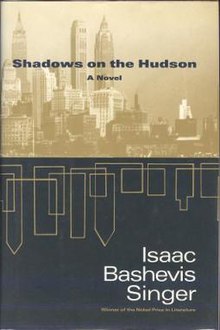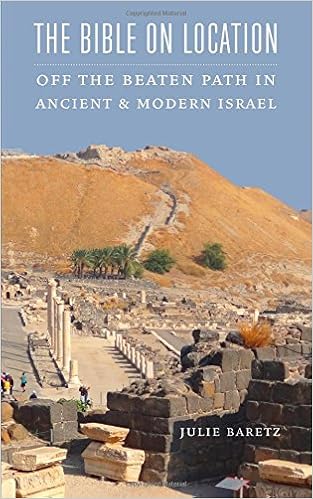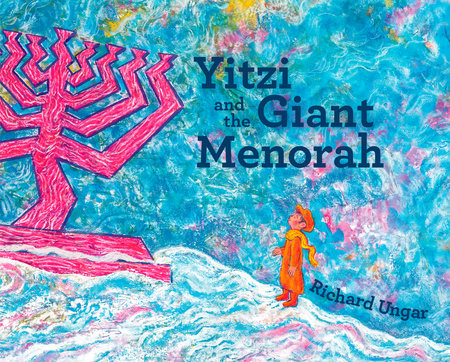|
On the Carousel
Cookbooks
Hanukkah
Jewish Responses to Conflict
Library Choices
New Fiction
New Israeli Fiction
|
|
Upcoming Events
Chevy Chase DC Library
Tuesday, December 5 at 4:30 PM
Author and Illustrator Mark Siegel. Learn more.
Daytimers
Monday, December 11 at 12:45 PM
Peter Szabo's
Finding Maria: A Young Man's Search for His Grandmother, and Himself
Co-sponsored by the Library Committee.
Browse the Library Display of Survivors' Memoirs.
Book Discussion
Tuesday, January 9 at 7 PM
People of the Book Club Discussion
Tuesday, January 23 at 10 AM
Ayelet Gundar-Goshen's
Waking Lions
With Rabbi Goldstein
|
For additional information about new books and library activities, please see the Library article in the Temple's bi-monthly newsletter.
|
|
|
|
BOOK FOR UPCOMING DAYTIMERS TALK
|
Finding Maria: A Young Man's Search for His Grandmother and Himself, by Peter Szabo
How many of us wish we had delved deeper into the past of an immigrant parent or grandparent while they were alive? Peter Szabo did it, holding many conversations with his grandmother, who emigrated from Hungary after surviving the Holocaust and the post-World War II communist era. Filling in her revelations with his own archival research, this skilled writer has produced a moving memoir of his grandmother.
Mr. Szabo will be discussing his book at the December 11th Daytimers program.
|
Nine Folds Make a Paper Swan, by Ruth Gilligan
Jews have been in Ireland in relatively small numbers for centuries, but there was a bump in that population with immigrants, particularly from Lithuania, around the turn of the 20th century. The author builds on that development in spinning a novel of Jewish-Irish life that spans the time period from 1901 to the present day. The main characters reflect the "stranger in a strange land" yearning for freedom and acceptance amidst the bounds of culture and religion. In the author's take on that quest, storytelling plays a role for each of those characters and is a pleasure the reader gets to share.
|

Among the Living, by Jonathan Rabb
Just as Ireland is a less common setting for a Jewish book, so too is post-World War II Savannah, Georgia, where Holocaust survivor and former Prague journalist Yitzhak Goldah lands in 1947. He stays with cousins who are conservative Jews in a city where rifts among the Jewish community, the racial divide of the Jim Crow era, and the effects of the Holocaust on survivors and those close to them provide for a complex backdrop for the engrossing tale the author weaves. By all accounts, a good read.
|

The Weight of Ink, by Rachel Kadish
One reader's comment says it well: "This book is a journey - through time (1600s, mid-1900s and early 2000) and space (Amsterdam, Israel, and London) whose only requirement is that we give ourselves over to the story being told and flow with it." The author is lauded for her beautiful writing, well-developed characters whose inner thoughts and feelings are skillfully revealed, and engaging story lines.
The Weight of Ink is long, deep, and the type of novel for those who truly enjoy immersing themselves in a literary work.
|

Three Floors Up, by Eshkol Nevo
The author creates a loosely connected three-part novel comprised of the stories of apartment dwellers in suburban Tel Aviv on three floors of one building. The residents of each apartment are facing emotional crises that threaten their sanity. Through their candid monologues to confidantes, we are able to peer into their minds and hearts as they each struggle with the obsessive thoughts that consume them and their relationships.
|

Shadows on the Hudson, by Isaac Bashevis Singer
Published posthumously in 1998, this great novel centers on a group of prosperous Jewish refugees in New York City during the post-World War II years of 1947 to 1949.
The New York Times review called the book a masterpiece because of "its largeness, the depth and complexity of its exorbitantly vivid, intelligent characters and from Singer's Dostoyevskian skill at weaving into a seamless tapestry various disorderly responses to the savagery of life." As the status of refugees has once again become front-page news, it is a good time to revisit the Nobel Prize-winning author's masterful exploration of the refugee experience.
|

Jewish Justices of the Supreme Court: From Brandeis to Kagan, by David G. Dalin
As a follow-up to Library Committee Co-Chair Herb Mintz's November Daytimers talk on Louis Brandeis, Benjamin Cardozo, and Felix Frankfurter, the first three Jewish Supreme Court Justices, this book expands the study to cover those stellar figures as well as the subsequent five Justices: Arthur Goldberg, who replaced Frankfurter, Abe Fortas, who replaced Goldberg, and the current sitting Jewish Justices Ruth Bader Ginsburg, Stephen Breyer, and Elena Kagan. An ordained Rabbi and Jewish history scholar Dalin provides insight into the lives of these individuals leading them to the highest seats in the American judicial system. Of particular interest is the relationship each of them has or had with Judaism. And many interesting tidbits about these very human characters make it an entertaining as well as informative work.
|

The Bible on Location: Off the Beaten Path in Ancient & Modern Israel, by Julie Baretz
The author leads us to a variety of locations where Bible stories are said to have taken place. As a licensed Israeli guide for some 30 years she tells a compelling story as she explains the sights, the context, and the Biblical references that make these sites ones to visit on a trip to Israel. But this is much more than a travel guide, and anyone interested in Jewish Biblical history will find it a worthwhile read with or without a plan to travel to Israel.
|

Disguised as Clark Kent: Jews, Comics, and the Creation of the Superhero, by Danny Fingeroth
Who knew Clark Kent, aka Superman, was Jewish! With the proliferation of Marvel comic-based movies, such as the recent Wonder Woman, and of graphic novels for young adults, we can forget that some of the most important original comic book creators were Jewish. This easily readable account tells of the Jewish men who imagined and brought to life through illustration the likes of Superman, the X-Men, and the Fantastic Four, and the roles their Jewishness played. Check it out, along with several other works of the genre (in our art collection located under the windows at 670.7):
Jews and American Comics: An Illustrated History of an American Art Form, edited by Paul Buhle;
From Krakow to Krypton: Jews and Comics, by Arie Kaplan;
Masters of American Comics, edited by John Carlin, Paul Karasik, and Brian Walker; and
Men of Tomorrow: Geeks, Gangsters, and the Birth of the Comic Book, by Gerard Jones.
|

Oskar and the Eight Blessings, by Tanya Simon, Richard Simon and illustrated by Mark Siegel
Winner of the National Jewish Book Award for Children's Literature
Ages preschool to grade 2
Following Kristallnacht, Oskar's parents put him on a boat to America with an address, a photo of an aunt he has never met, and his father's words, "Oskar, even in bad times, people can be good. You have to look for the blessings." He arrives on Christmas Eve 1938, which also happens to be the seventh night of Hanukkah. What follows is an ultimately uplifting story as Oskar walks the length of Manhattan to find his aunt's home and along the way encounters seven individuals who each offer him a small act of kindness. The back matter provides further information about how Oskar's interactions reference historical events in 1938 New York City.
|

Yitzi and the Giant Menorah, by Richard Ungar
Ages 4 to grade 2
Once again we find those nudniks of Chelm puzzling over a problem. This time it is how to thank the Mayor of Lublin for his gift of a giant menorah. It takes many false starts and Hanukkah is almost over before they finally succeed. The watercolor illustrations burst with vibrant energy.
|
Dreidels on the Brain, by Joel Ben Izzy
A National Jewish Book Award Finalist
Grades 4 to 7, 318 Pages
This is a coming-of-age story told by a master storyteller. We meet Joel, a 12-year-old aspiring magician, and one of the few Jewish kids living in the suburbs of LA in 1971. He is asked to explain Hanukkah to his whole school at the Winter Holiday Assembly at a time when his family in in crisis. Joel draws on his talents as a jokester and his ever-ready magic tricks to help get him through the challenge.
|

Courage & Defiance: Stories of Spies, Saboteurs, and Survivors in World War II Denmark, by Deborah Hopkinson
A Sydney Taylor Notable Book Award Winner
Grades 3 to 7, 289 Pages
From her extensive research, Hopkinson weaves real voices into her story of the heroic young Danish men and women who fought back against the Nazis. They were spies, saboteurs, and rescuers of the Jewish population of Denmark, of which 95 percent survived. The book includes a map, index, source notes, and a selected chronology.
|

Massacre in Munich: How Terrorists Changed the Olympics and the World, by Don Nardo
Grades 5 to 7, 55 Pages
Using gripping photographs and clear prose, Nardo exposes the horror of the 1972 Olympics. In addition to the compelling narrative, Nardo places the Olympics in its historical context with the pressure on Germany to redeem itself for the 1936 Olympics under Nazi rule. He also notes that in an age before social media, the 1972 games continued despite the hostage situation unfolding in the Olympic village. The book includes a timeline, index, further reading, glossary, and source notes.
|
|
|